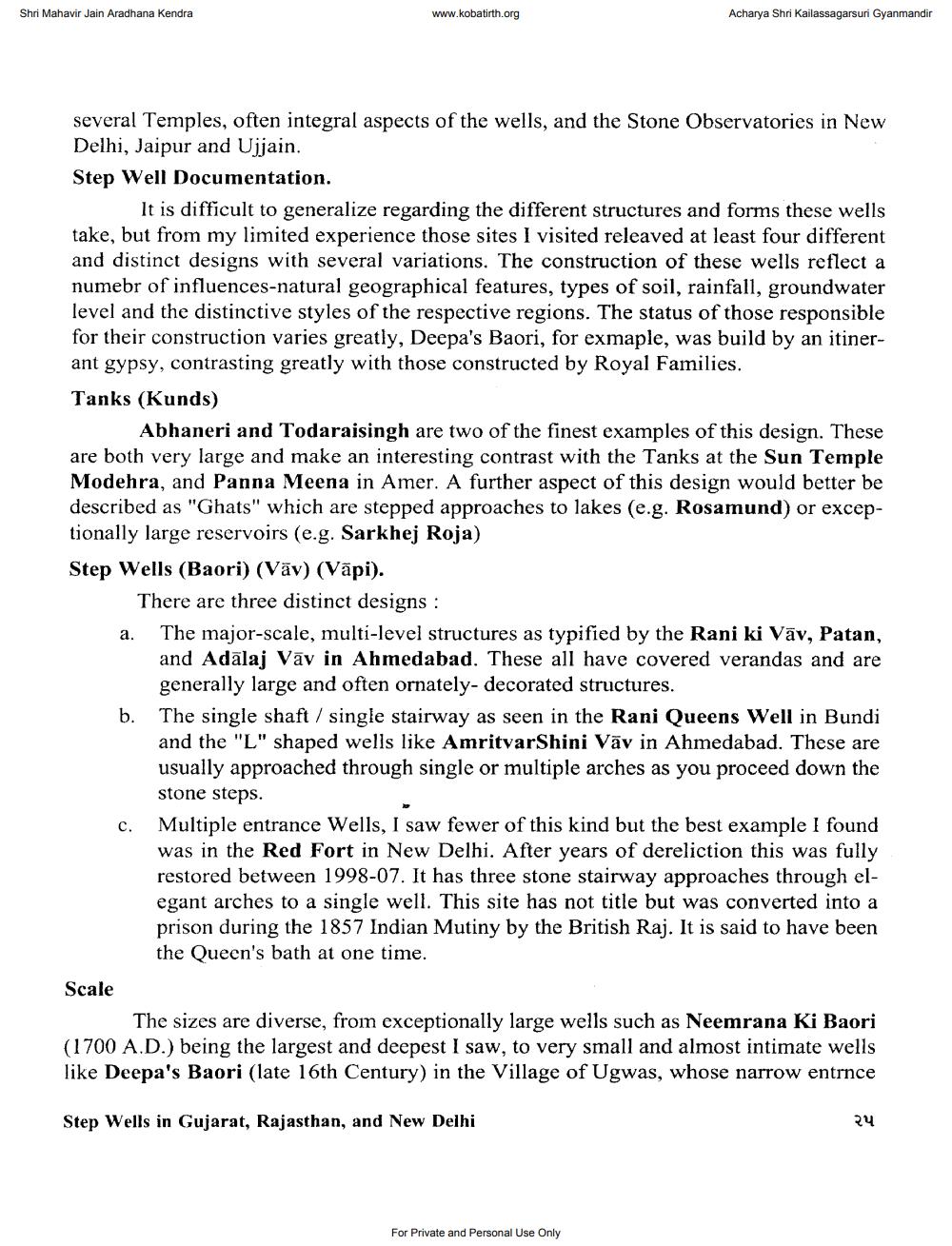________________
Shri Mahavir Jain Aradhana Kendra
several Temples, often integral aspects of the wells, and the Stone Observatories in New Delhi, Jaipur and Ujjain.
Step Well Documentation.
It is difficult to generalize regarding the different structures and forms these wells take, but from my limited experience those sites I visited releaved at least four different and distinct designs with several variations. The construction of these wells reflect a numebr of influences-natural geographical features, types of soil, rainfall, groundwater level and the distinctive styles of the respective regions. The status of those responsible for their construction varies greatly, Deepa's Baori, for exmaple, was build by an itinerant gypsy, contrasting greatly with those constructed by Royal Families.
Step Wells (Baori) (Väv) (Väpi).
www.kobatirth.org
Tanks (Kunds)
Abhaneri and Todaraisingh are two of the finest examples of this design. These are both very large and make an interesting contrast with the Tanks at the Sun Temple Modehra, and Panna Meena in Amer. A further aspect of this design would better be described as "Ghats" which are stepped approaches to lakes (e.g. Rosamund) or exceptionally large reservoirs (e.g. Sarkhej Roja)
Scale
b.
Acharya Shri Kailassagarsuri Gyanmandir
C.
There are three distinct designs:
a. The major-scale, multi-level structures as typified by the Rani ki Vāv, Patan, and Adalaj Väv in Ahmedabad. These all have covered verandas and are generally large and often ornately- decorated structures.
The single shaft / single stairway as seen in the Rani Queens Well in Bundi and the "L" shaped wells like AmritvarShini Väv in Ahmedabad. These are usually approached through single or multiple arches as you proceed down the stone steps.
Multiple entrance Wells, I saw fewer of this kind but the best example I found was in the Red Fort in New Delhi. After years of dereliction this was fully restored between 1998-07. It has three stone stairway approaches through elegant arches to a single well. This site has not title but was converted into a prison during the 1857 Indian Mutiny by the British Raj. It is said to have been the Queen's bath at one time.
The sizes are diverse, from exceptionally large wells such as Neemrana Ki Baori (1700 A.D.) being the largest and deepest I saw, to very small and almost intimate wells like Deepa's Baori (late 16th Century) in the Village of Ugwas, whose narrow entrnce
Step Wells in Gujarat, Rajasthan, and New Delhi
For Private and Personal Use Only
૨૫




